Peyo 1983 Baker Smurf Drinking Glass: 129,800 ppm Lead + 5,587 ppm Cadmium + 5,344 ppm Arsenic (90 ppm Lead is unsafe for kids!)
For those new to this website:
Tamara Rubin is a multiple-federal-award-winning independent advocate for childhood Lead poisoning prevention and consumer goods safety, and a documentary filmmaker. She is also a mother of Lead-poisoned children (two of her sons were acutely Lead-poisoned in 2005). Since 2009, Tamara has been using XRF technology (a scientific method used by the U.S. Consumer Product Safety Commission) to test consumer goods for toxicants (specifically heavy metals — including Lead, Cadmium, Mercury, Antimony, and Arsenic). All test results reported on this website are science-based, accurate, and replicable. Items are tested multiple times to confirm the test results for each component tested. Tamara’s work was featured in Consumer Reports Magazine in February of 2023 (March 2023 print edition).
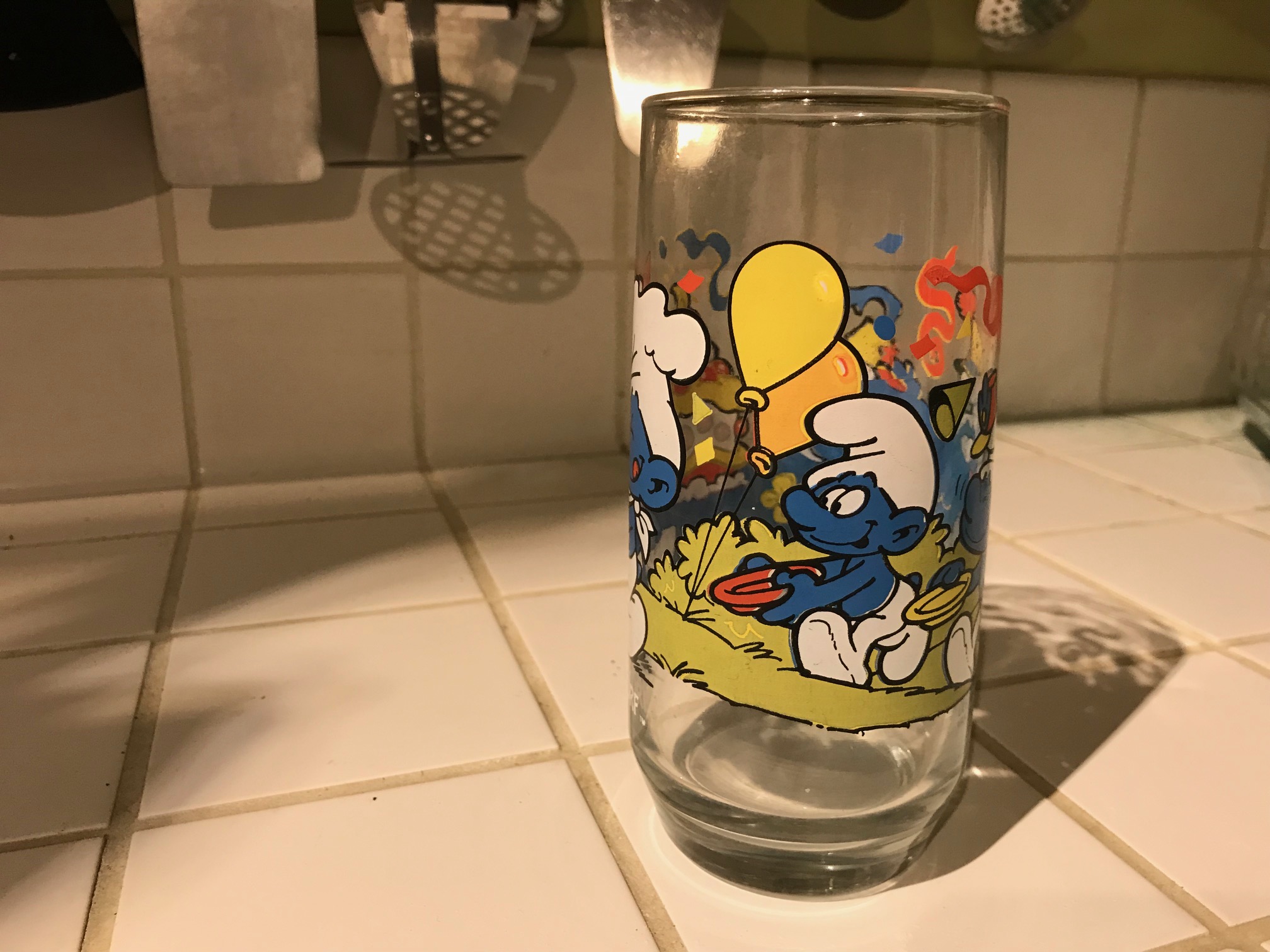 To see more character glasses we have tested, click here.
To see more character glasses we have tested, click here.
The amount of Lead considered illegal in modern items intended for use by children is anything 90 ppm Lead or higher in the paint or coating.
Please avoid giving your children or grandchildren any painted or otherwise highly decorated vintage glassware, as most products like this one are likely to be at LEAST high Lead, if not also high Cadmium and high Arsenic.
If you *MUST* hold onto something like this, please consider putting your collection in a sealed shadow box (with a note on the back stating that it likely has high levels of Lead and should not be used for food-use purposes).
If you are concerned about what to do with a glass such as this (what’s the potential impact on the environment of tossing it in the landfill, for example), click here.
When tested with an XRF instrument, this glass had the following readings (with each test lasting at least 120 seconds/2 minutes):
Blue Painted Area:
- Lead (Pb): 89,000 +/- 2,300 ppm
- Cadmium (Cd): 1,812 +/- 91 ppm
- Mercury (Hg): Non-Detect/ ND
- Barium (Ba): Non-Detect/ ND
- Chromium (Cr): 2,486 +/- 146 ppm
- Antimony (Sb): Non-Detect/ ND
- Selenium (Se): Non-Detect/ ND
- Zinc (Zn): 368 +/- 43 ppm
- Copper (Cu): 109 +/- 46 ppm
- Iron (Fe): 296 +/- 134 ppm
- Titanium (Ti): 12,200 +/- 500 ppm
- Platinum (Pt): 509 +/- 176 ppm
- Cobalt (Co): 6,193 +/- 292 ppm
Continue reading below the image.
White Painted Area:
- Lead (Pb): 77,000 +/- 1,700 ppm
- Cadmium (Cd): 3,069 +/- 85 ppm
- Mercury (Hg): Non-Detect/ ND
- Arsenic (As): 5,344 +/- 239 ppm
- Barium (Ba): Non-Detect/ ND
- Chromium (Cr): 460 +/- 96 ppm
- Antimony (Sb): 103 +/- 56 ppm
- Selenium (Se): Non-Detect/ ND
- Tin (Sn): 160 +/- 36 ppm
- Zinc (Zn): 122 +/- 17 ppm
- Nickel (Ni): 162 +/- 25 ppm
- Iron (Fe): 197 +/- 53 ppm
- Vanadium (V): 997 +/- 302 ppm
- Titanium (Ti): 17,000 +/- 800 ppm
Green Painted Area:
- Lead (Pb): 129,800 +/- 4,100 ppm
- Cadmium (Cd): 4,134 +/- 231 ppm
- Mercury (Hg): Non-Detect/ ND
- Barium (Ba): Non-Detect/ ND
- Chromium (Cr): 2,863 +/- 172 ppm
- Antimony (Sb): Non-Detect/ ND
- Selenium (Se): Non-Detect/ ND
- Zinc (Zn): 2,293 +/- 123 ppm
- Copper (Cu): 957 +/- 89 ppm
- Nickel (Ni): 1,664 +/- 144 ppm
- Iron (Fe): 2,146 +/- 243 ppm
- Titanium (Ti): 13,800 +/- 700 ppm
- Cobalt (Co): 989 +/- 139 ppm
- Magnesium (Mn): 1,392 +/- 312 ppm
Continue reading below the image.
Yellow Painted Area:
- Lead (Pb): 112,000 +/- 3,500 ppm
- Cadmium (Cd): 5,587 +/- 310 ppm
- Mercury (Hg): Non-Detect/ ND
- Barium (Ba): Non-Detect/ ND
- Chromium (Cr): 646 +/- 128 ppm
- Antimony (Sb): Non-Detect/ ND
- Selenium (Se): 484 +/- 72 ppm
- Zinc (Zn): 2,618 +/- 137 ppm
- Copper (Cu): 331 +/- 65 ppm
- Nickel (Ni): 233 +/- 91 ppm
- Iron (Fe): 480 +/- 168 ppm
- Titanium (Ti): 15,600 +/- 800 ppm
Clear Glass of Bottom of cup:
- Lead (Pb): Non-Detect/ ND
- Cadmium (Cd): Non-Detect/ ND
- Mercury (Hg): Non-Detect/ ND
- Barium (Ba): Non-Detect/ ND
- Chromium (Cr): Non-Detect/ ND
- Antimony (Sb): 48 +/- 10 ppm
- Selenium (Se): Non-Detect/ ND
- Bromine (Br): 8 +/- 2 ppm
- Zinc (Zn): 19 +/- 9 ppm
- Iron (Fe): 181 +/- 71 ppm
- Vanadium (V): 67 +/- 12 ppm
- Titanium (Ti): 51 +/- 13 ppm
As always, please let me know if you have any questions.
Thank you for reading and for sharing these results.
Never Miss an Important Article Again!
Join our Email List









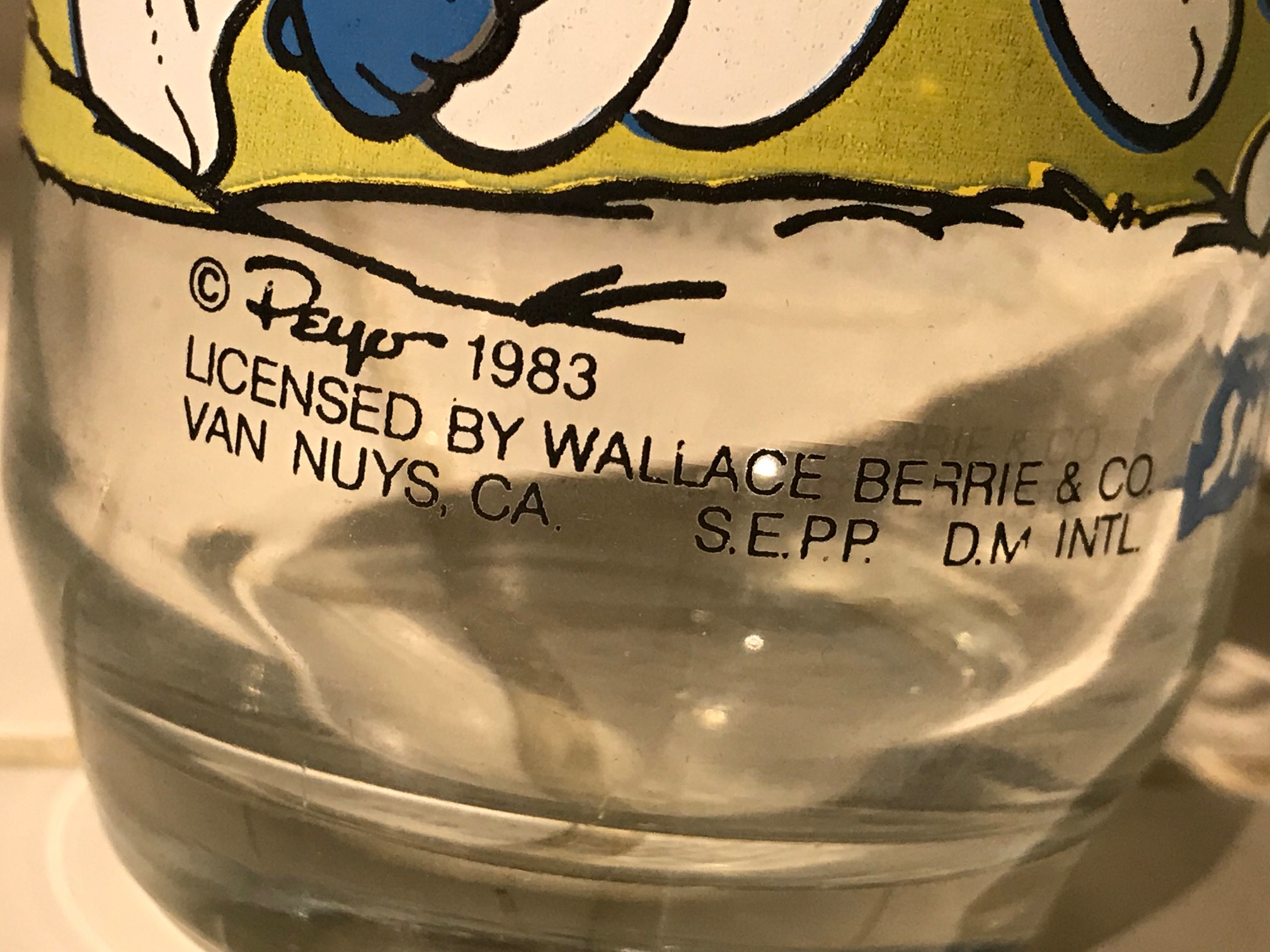

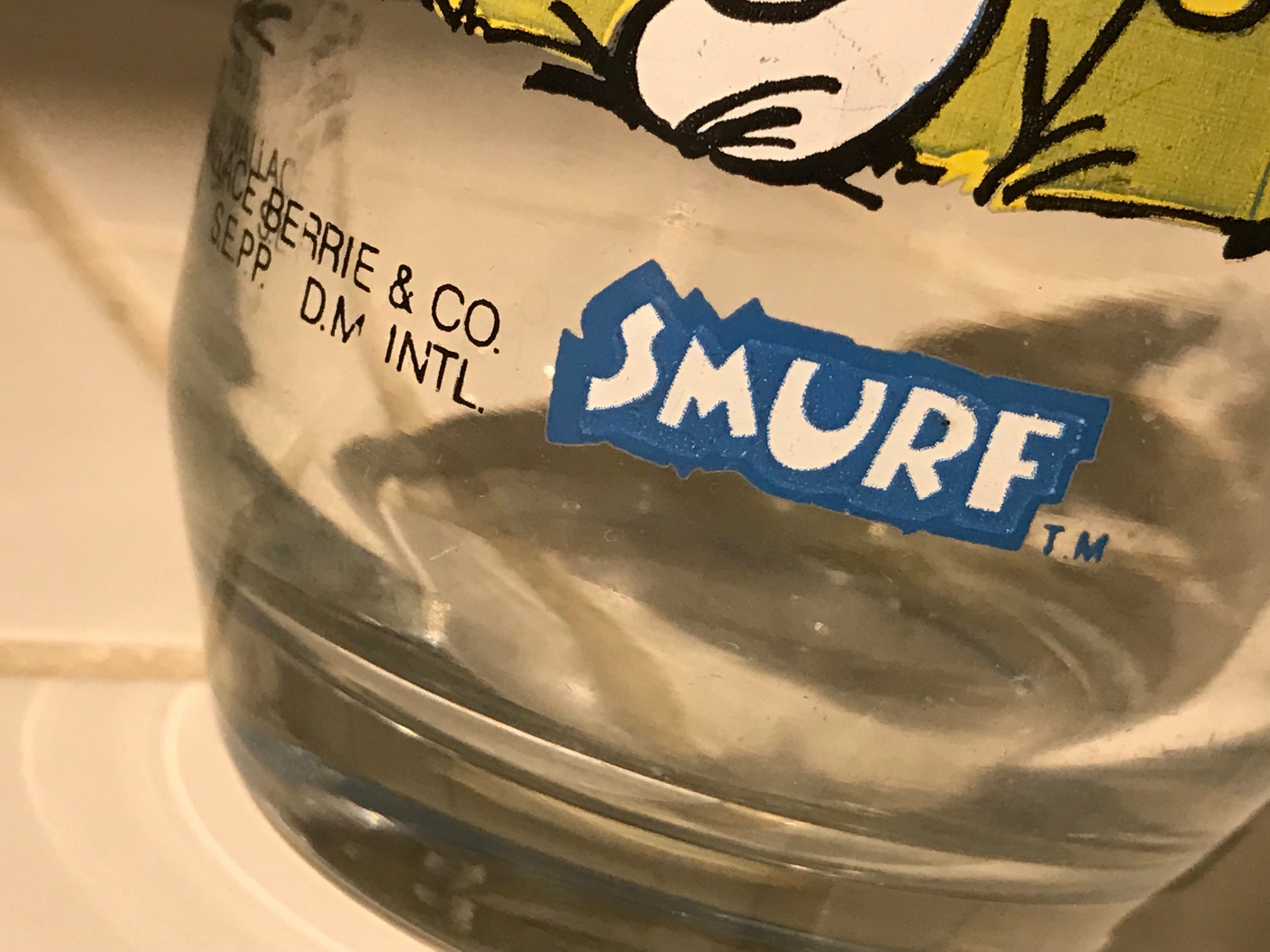
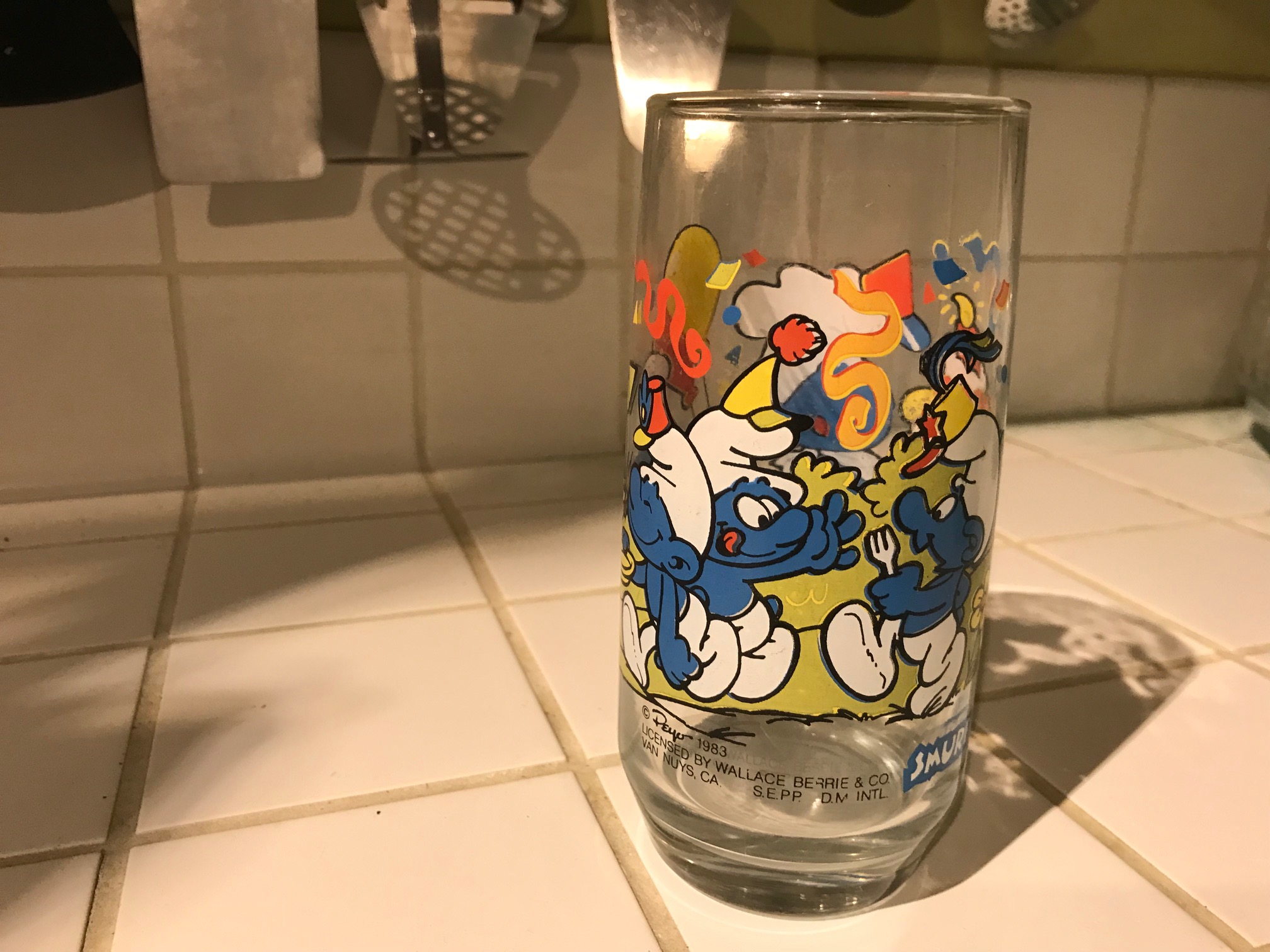
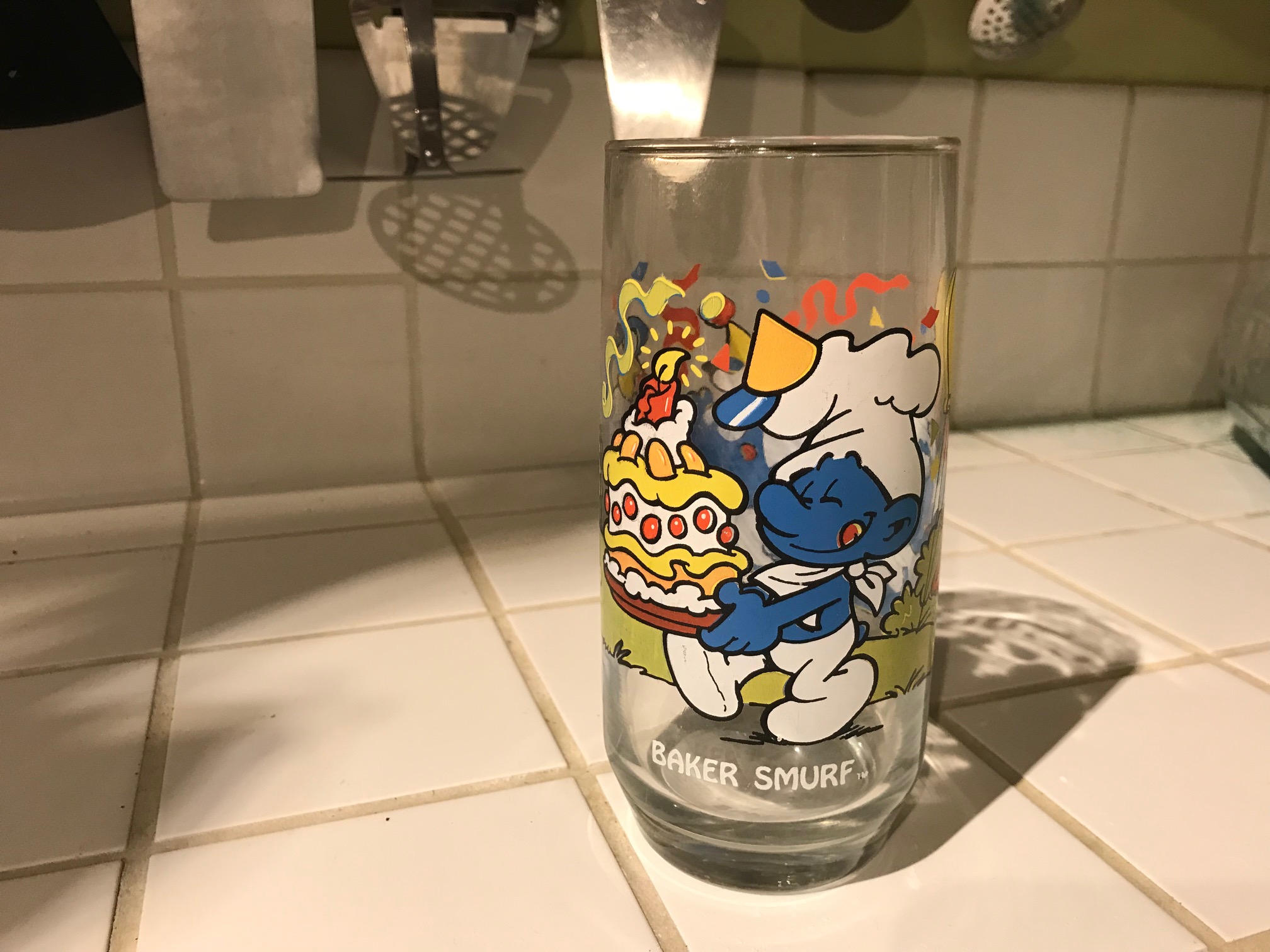

I’m very curious as to how you converted from the mg/cm2 the xrf outputs to ppm? Did you scrape off a section of the paint of each to get a weight? Ppm is a relative measurement not an actual amount of lead. For these numbers to have meaning we need for information on your test and study.
Hi Rob, I use an instrument that tests in PPM. It is the same instrumentation and software used by the Consumer Product Safety Commission (CSPC). more details are on this post (which is also linked in the header menu on every page of the blog): https://tamararubin.com/2016/12/ask-tamara-what-do-you-use-to-test-for-lead/
Tamara
I pulled out my smurfs Hardee’s glasses tonight after being stored untouched for over thirty years and noticed a reflective substance only covering the art with some parts more so than others it had a metallic of sorts. It is easily removed for the most part with just a wet cloth some areas you would need a bit of scrubbing. The reason I pulled them down was to sell on eBay. My question is am I required to say anything about it and if so what would you exactly say. I don’t believe it matters once I say lead plus all the rest no one is going to buy them I’m sure. Thank you.
My family has been drinking out of a set of 11 of these (acquired from eBay) on a daily basis since 2011. It is very common to have them used as water glasses that are used all day and overnight. Obviously, we were unaware of the lead (and other) concerns. They are routinely put through the dishwasher, though the paint appears undamaged with only minor fading. Of course we’re going to retire them now, but my question is how worried should I be?
If you have been using them daily, getting a blood lead level test for everyone would not be unwarranted. Have you seen my documentary film yet? That will help you understand the concern: https://www.youtube.com/watch?v=lMbhbwMhs1U&t=193s
Hello, I’m wondering if you ever tested the mid ’80s Hardee’s mugs that say Rise and Shine / Homemade Biscuits. The glaze is black-brown-cream. I have several in the cabinet that my grandparents got, dated 1984 to 1986, and I’d love to use them but they look suspect.
Can you send me a photo? TamaraRubin@mac.com
Thanks!